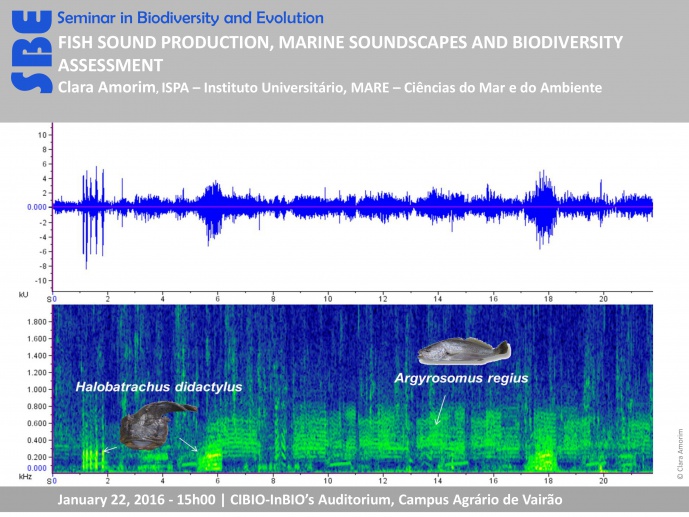FISH SOUND PRODUCTION, MARINE SOUNDSCAPES AND BIODIVERSITY


Teleost fish are likely the largest vocal vertebrate group and possess the most diversified sonic mechanisms among vertebrates. Fish acoustic signals are produced during social interactions or during distress situations as in insects or other vertebrates. These signals are important during reproduction or to gain access to limited resources. Not surprisingly, sounds made by fish are a significant part of marine soundscapes. In this talk I will give an overview of the role of acoustic signalling in the outcome of social interactions in fish. I will review recent advances in marine soundscape ecology, an emergent field that studies the acoustic seascape resulting from natural and human originated sounds. Finally, I will explain how acoustic monitoring of aquatic environments can allow studying habitat health including biodiversity.
Clara Amorim has studied acoustic communication in fish since her PhD at the University of Aberdeen (1997). She is currently a Principal Investigator (Investigador FCT) at ISPA- Instituto Universitário.
Image credits: Clara Amorim